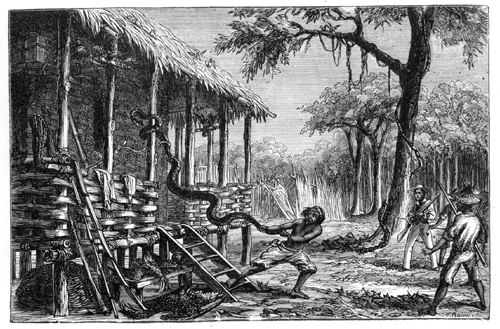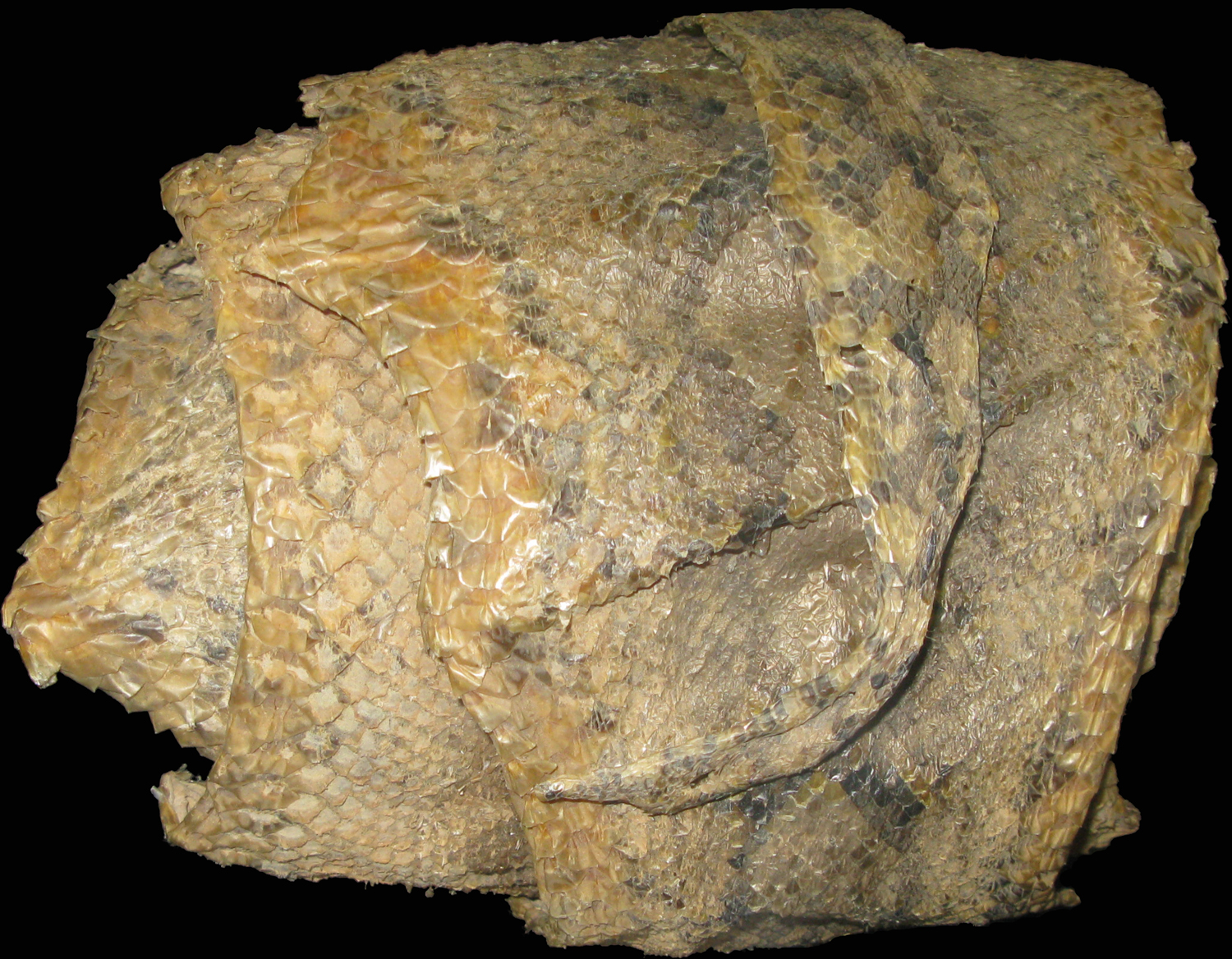By George Beccaloni
After Wallace's death Wallace's children William and Violet donated many books, manuscripts, photographs, items of furniture, ethnographic artifacts and specimens which had belonged to their father to various societies and other institutions in England. Letters relating to these donations are mostly in the Natural History Museum, London, library and have the finding code "WP16/2". They are listed in the Museum's online archive catalogue here.
The donations I am aware of are as follows:-
British Library: Wallace's children donated a very important collection of letters to Wallace from noteworthy people including Darwin, Huxley and Hooker. The following manuscripts of books Wallace had written were donated in August 1947 (see WP16/2/21): Man's Place in the Universe; The World of Life; Darwinism; The Wonderful Century; Bad Times; My Life; and Is Mars Habitable?.
British Museum: artifacts from the Amazon, the Malay Archipelago and North America. The following items are listed in the Merlin Collections Database of the British Museum's Department of Africa, Oceania and the Americas (AOA) as having been collected by Wallace and donated by his children William & Violet in 1935 (CLICK HERE and HERE to see letters about them):
Oc1935,1014.1
Figure (with 'shield'), korwar, made of wood. Height 13.00in
Found/Acquired:Dore(O) Oceania, Melanesia, New Guinea, West Papua, Dore
Oc1935,1014.2
Figure, korwar, made of wood.
Found/Acquired:Dore(O) Oceania, Melanesia, New Guinea, West Papua, Dore
Oc1935,1014.3
Figure, korwar, made of wood.
Found/Acquired:Dore(O) Oceania, Melanesia, New Guinea, West Papua, Dore
Oc1935,1014.4
Stick (with figure), charm made of wood, cotton cloth, vegetable fibre.
Found/Acquired:Dore(O) Oceania, Melanesia, New Guinea, West Papua, Dore
Oc1935,1014.5
Wooden spoon, the handle ornamented & terminating in a human figure. Length 26.00cm
Found/Acquired:Dore(O) Oceania, Melanesia, New Guinea, West Papua, Dore
Oc1935,1014.6
Shield (for korvar figure) made of wood.
Found/Acquired:Dore(O) Oceania, Melanesia, New Guinea, West Papua, Dore
Oc1935,1014.7
Beater (for clay) made of wood.
Found/Acquired:Dore(O) Oceania, Melanesia, New Guinea, West Papua, Dore
Oc1935,1014.8
Scoop made of coconut shell.
Found/Acquired:Dorey(O) Oceania, Melanesia, New Guinea, West Papua, Dorey (?)
Oc1935,1014.9
Wooden float for turtle spear, carved in the form of a bird. Length 27.00cm
Found/Acquired:Batanta(I) Oceania, Melanesia, New Guinea, West Papua, Raja Ampat Islands, Batanta
Reproduction:NPS028509
As1935,1014.10
Woman's belt (waist) made of cane, rattan.
Found/Acquired:Seram(I) Asia, Indonesia, Maluku (Moluccas), Seram
Am1935,1014.11
Comb made of wood, thread, cane.
Found/Acquired:Amazon(G) Americas, South America, Amazon
Found/Acquired:Brazil(C) Americas, South America, Brazil (?)
Am1935,1014.12
Axe made of stone.
Found/Acquired:Amazon(G) Americas, South America, Amazon (Upper)
Found/Acquired:Brazil(C) Americas, South America, Brazil
For more information and images of some of the items CLICK HERE.
Down House museum (English Heritage): A magnificent photograph of Wallace was donated by his son William to Down House. It used to hang in the New Study and I don't know where it is currently.
Hertford Grammar School library (now the Richard Hale School, Hertford): Two paintings by Wallace. I know the following about these paintings:-
In a letter in the Natural History Museum, London, library (finding number WP16/2/29) from George W. Kinman, Headmaster of Hertford Grammar School, to Wallace's son William, dated July 19th 1916, Kinman says "I shall be very glad indeed to have the pictures mentioned in your letter, whether Dr Wallace painted them himself or not. Perhaps you will kindly inform me as to this." On the back of this letter William wrote "Two large paintings on canvas & rollers representing scenes in the Malay Archipelago which A.R.W. had done to illustrate lectures."
A second letter in the NHM library (finding number WP16/2/30) from Kinman to William, dated October 2nd 1916 reads: "I feel sure you will excuse my long delay in acknowledging the receipt of the pictures.....From your letter I did not think that the pictures were quite such an acquisition as they are. I am hanging them in one of the new class rooms which we intend to fit up as a Geography room - The colours of the walls shows them off admirably and apart from the interest of the subjects they appear to me of considerable artistic value."
For information about Kinman see http://www.richard-hale-association.org.uk/index.php?option=com_content&task=view&id=172&Itemid=93
Note that Tom Gladwin has tried to locate these paintings and has so far failed to find them in the school archives.
Linnean Society of London: Richard Spruce's diary and a MS of one of his papers, eight of Wallace's notebooks, sketches, manuscript of Wallace's book on Amazonian palm trees, letters from Wallace to William Mitten. The Society also has the rolled-up skin (somewhat damaged) of a python collected by Wallace which was donated to them by Wallace's grandson John in 1958. It is reputed to be the skin of the snake which Wallace found in the roof of his hut on Amboyna (Ambon Island, Indonesia). In The Malay Archipelago he says "It was about twelve feet long and very thick, capable of doing much mischief and of swallowing a dog or a child."
 |
 |
|
The python being removed from Wallace's hut. From The Malay Archipelago |
Wallace's python skin in the Linnean Society |
Museum of the History of Science, Oxford: Wallace's microscope plus two of William Mitten's microscopes were donated by Wallace's children to this museum. The museum still has these (Annette Lord, pers. comm., 2012). Wallace's botanical microscope is described and pictured here: http://www.mhs.ox.ac.uk/object/inv/84707
Museum of Zoology, Cambridge: Five of Wallace's skins of Birds of Paradise were sold to the museum by Wallace's son William.
National Portrait Gallery, London: A collection of photographs of Wallace, a medallion of Wallace by Bruce-Joy and an oil painting of Wallace over a photograph by Thomas Sims. See this link for more information.
Natural History Museum, London: Two specimen notebooks from the Malay Archipelago plus bird specimens. The NHM also owns four insect collecting nets which were "Made by the BBC for the TV "World About Us" programme on Alfred Wallace entitled "The Forgotten Voyage", December 1982." (Chalmers-Hunt, 1994). These are based on Victorian designs. Their catalogue numbers are Items 120, 137, 179, and 184 [See Chalmers-Hunt, J. M. 1994. Entomological bygones or historical entomological collecting equipment and associated memorabilia. Archives of Natural History, 21 (3): 357–378.]
Pitt Rivers Museum, Oxford: Publications, stone implements and other artifacts. Some of the stone arrowheads from the USA are on display. The labels beside them state that they were donated by W. G. Wallace (ARW's son) but no mention is made of the fact that they were originally owned by ARW.
Royal Botanic Gardens, Kew, London: Artifacts, Richard Spruce's notebook. The artifacts have been catalogued on the following online database: http://apps.kew.org/ecbot/search/ and include a native umbrella made from a palm leaf, sago cakes, a shirt made of bark cloth and a sample of the arrow poison curare, the last of which was undoubtedly collected by ARW, but was donated by his son William (search for "Wallace AR", "Wallace WG" and "Wallace Bates").
Royal Entomological Society: [The following was not presented by Wallace's children but it is still of interest] Wallace's desk slate (a writing slope) is in the Council Room of the Society, where until recently at least it was still used during council meetings. Wallace purchased it in 1865 and used it until his death. It was presented to the Linnean Society in 1921 by Professor Poulton of Oxford. Presumably the Linnean Society then gave it to the Royal Entomological Society (see Brackman, 1980).
Royal Geographical Society, London: A large armchair often used by Wallace was donated to Society by his children. A letter from Arthur R. Hinks of the RGS to his daughter Violet (NHM library finding number WP16/2/58) dated August 13th, 1931, asks Violet to get a removal firm to deliver the chair to the RGS, at their expense, when she moved house at the end of that month. This Society has tried and failed to locate this chair, most recently in 2011.
Royal Society, London: A revolving bookstand originally given to Wallace by Prof. R. Meldola was donated to Society in 1935 by Wallace's children. I do not know whether the Society still has this item. The children also donated Richard Spruce's sketches and notes, which Wallace had owned. Two letters in the library of the Natural History Museum, London, give more information about the bookstand:-
Extract of a letter from H. H. Dale to Wallace's son William dated 25th July 1935 (NHM finding number WP16/2/59): "You may be assured that the Society will treasure such a momento of Alfred Russell [sic] Wallace...I can forsee that it will, for many years, hold an honoured place on the table at which the Society's Officers hold their confidential meetings, and that it will help their work while keeping them in mind of your great father."
Extract from a letter written by the Assistant Secretary of the Royal Society to William dated 2nd August 1935 (NHM finding number WP16/2/60): "I write to inform you that the revolving bookstand has safely arrived here...I note that you wish Miss Wallace's name to be associated with yours, when Council passes a formal vote of thanks in October."
Sadly, the Society have tried and failed to locate this item.
University College London: Wallace's fingerprints. These were sent to Francis Galton as an enclosure to THIS letter.
